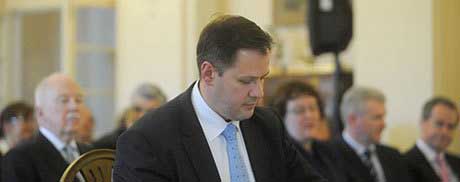Why do government IT projects fail so often?
by Justin Hendry of itnews Australia
Wants “tech wrecks”, record spending levels studied.
The Australian Labor Party has called for a senate inquiry into the “digital wreckage” left by the federal government’s digital transformation efforts, which it claims will see IT spending climb to $10 billion.
Shadow minister for the digital economy Ed Husic today appealed to the finance and public administration committee to look into the series of high-profile “tech wrecks” that have occurred over the last year.
These include the eCensus failure, Centrelink robo-debt program, the abandonment of the single government website gov.au, and repeated ATO website crashes.
“Labor believes the senate finance and public administration committee should examine why so many projects have failed, been cancelled or crashed and what can be done to put the vital work of digital transformation at the centre of government,” Husic said in a statement.
Despite all the digital failures the Turnbull government has remained silent as services crash and projects go off the rails.Ed Husic, Shadow minister for the digital economy
It follows the party’s similar call for an inquiry in April, which Husic says went unanswered.
Why do government IT projects fail so often?
“Despite all the digital failures the Turnbull government has remained silent as services crash and projects go off the rails,” he said.
“The Australian public deserves to know what went wrong and how it can be fixed.”
Husic also wants the government to explain why it wants to boost its IT spend to $10 billion – more than $3 billion more than last year.
Assistant Minister for Digital Transformation Angus Taylor pledged that the Digital Transformation Agency’s new investment management office would review the government’s biggest tech projects by mid-2017, but is still yet to publicly release its findings.
Why do government IT projects fail so often?
The DTA identified at least half a billion dollars worth of IT projects across government when it fronted senate estimates in May.
Husic has been a staunch critic of the government’s ability to deliver modern digital services since taking on the shadow digital economy portfolio last October.
He cites a 2016 AIIA survey with Galaxy that found only 16 percent of citizens were satisfied with government digital services, down from a 2011 government-run survey that put user satisfaction at 86 percent.
“As governments across the globe embrace the use of digital platforms to deliver efficient online services, Australia can’t afford to be left behind. But public trust is lagging because the Turnbull government can’t get its act together,” Husic said.
“Without proper oversight the Turnbull government will just continue to preside rover more failures and the Australian public’s trust in digital transformation will slide further.”

